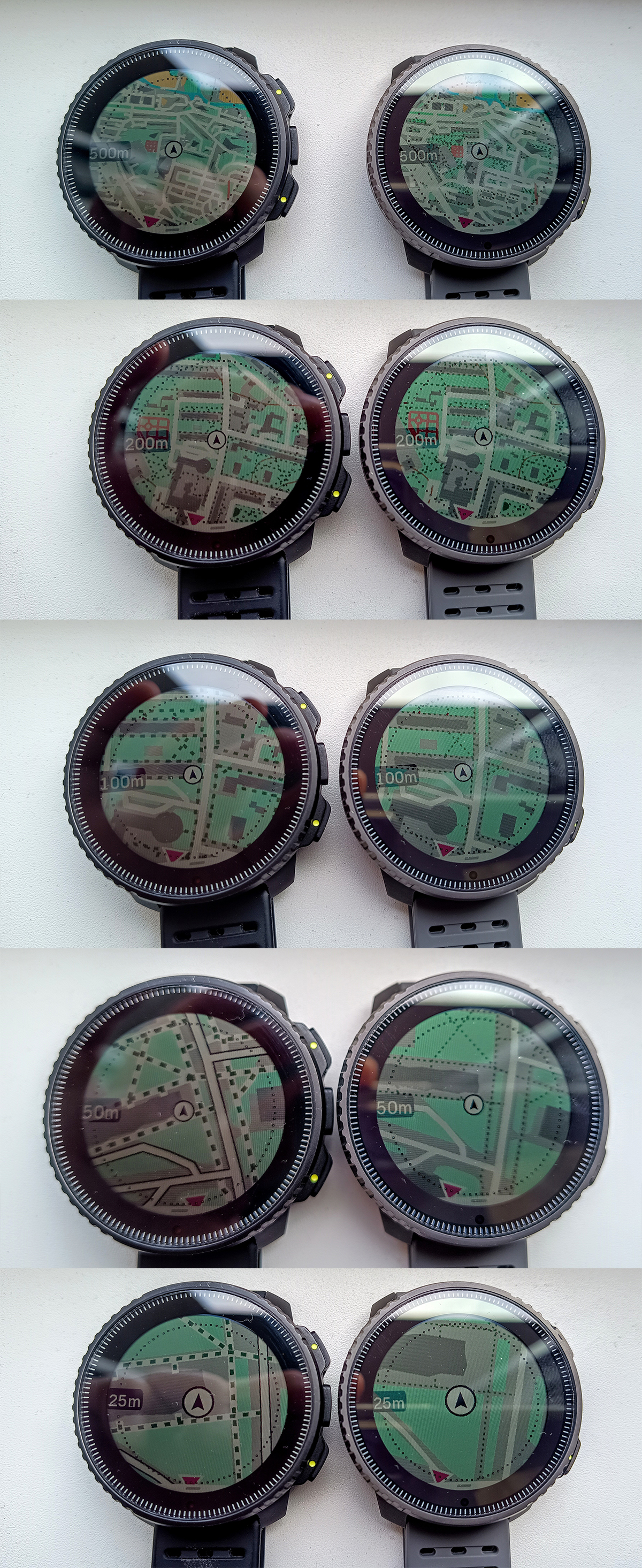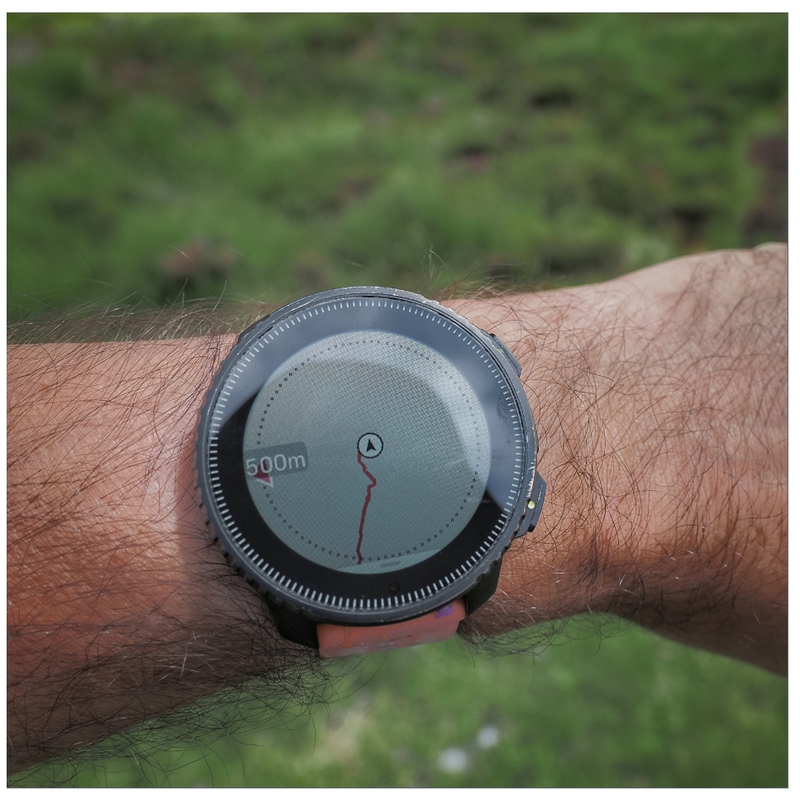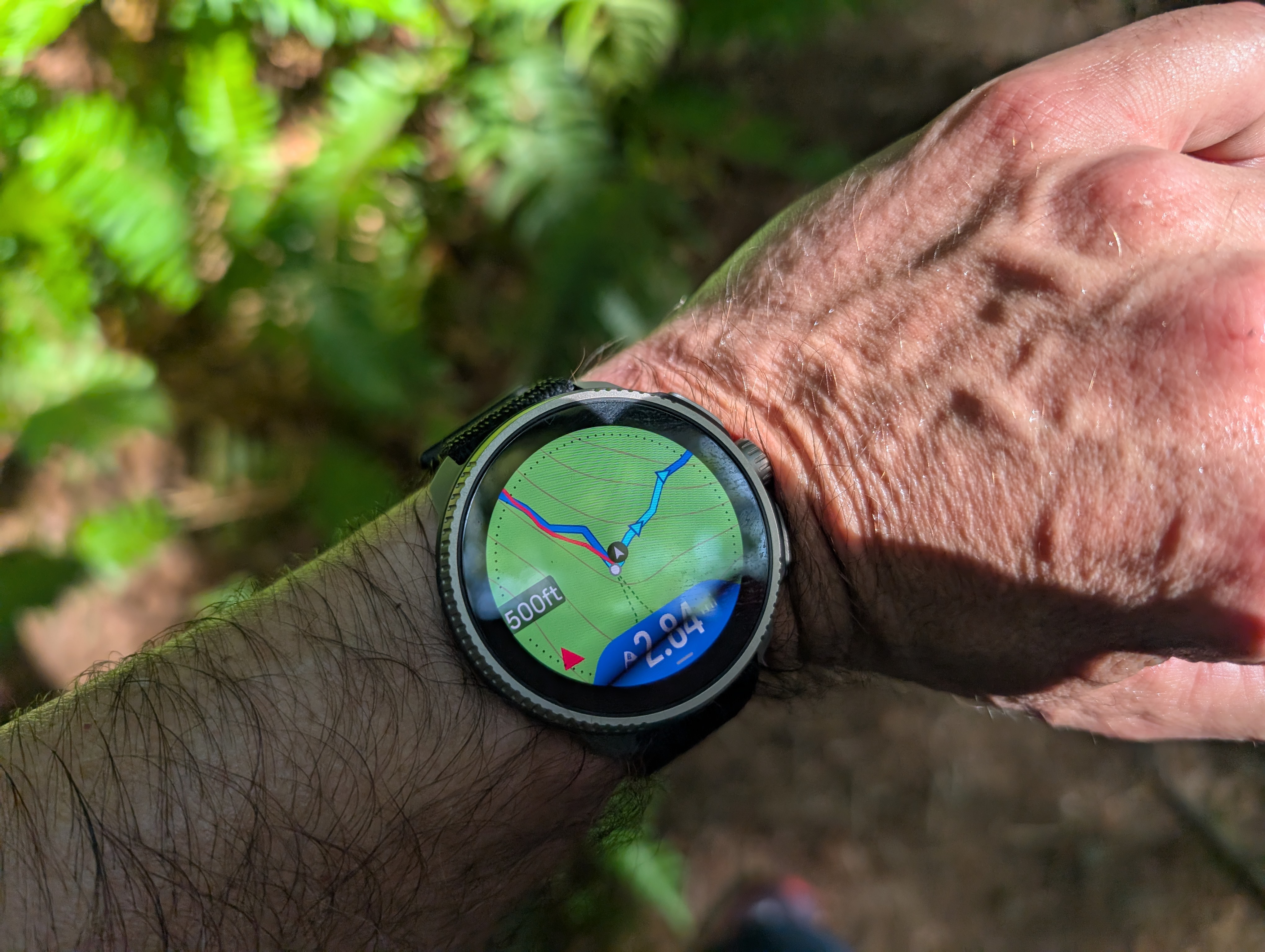Map Rendering and Trail Visibility after Software Update 2.43.8/.12
-
A couple more observations and screenshots.
The following two screenshots are from Suunto App showing my local area with a slightly different level of zoom. Both screenshots use “winter” map style. What is very interesting to see is that on the first screenshot we see sidewalks and on the second - no sidewalks. At the same time, trails are shown at both zoom levels.
Sidewalks and trails visible:
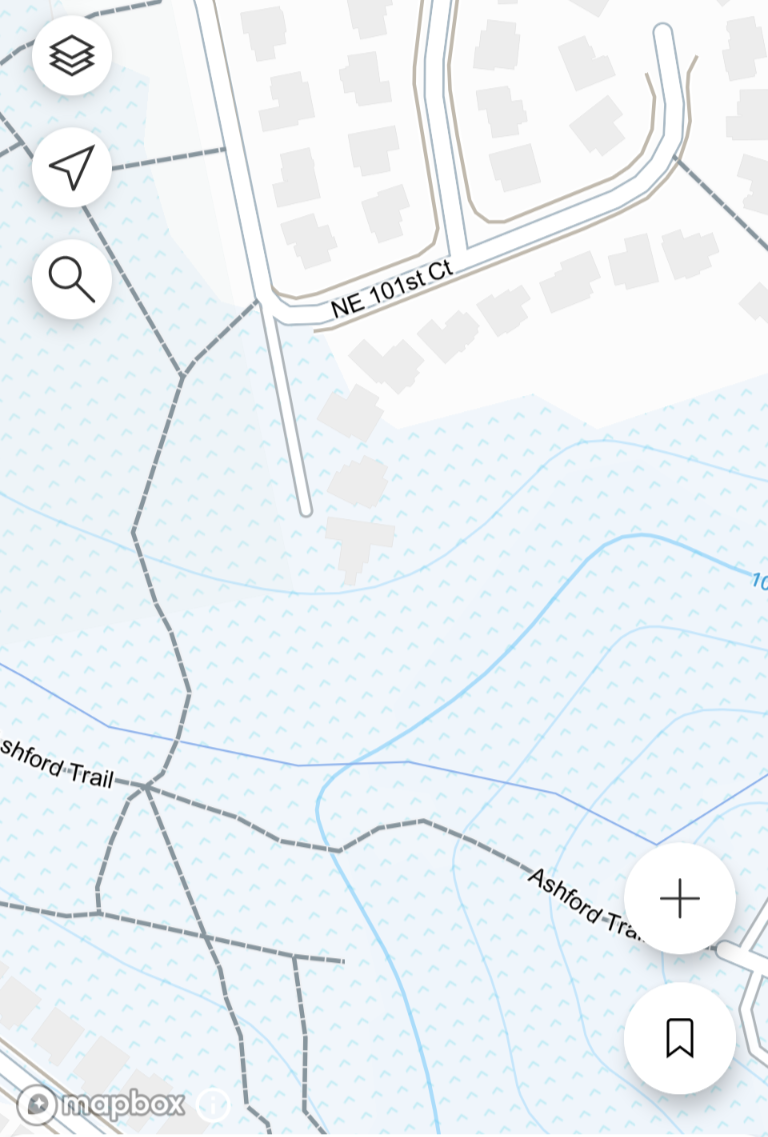
Only trails are visible but sidewalks are hidden:
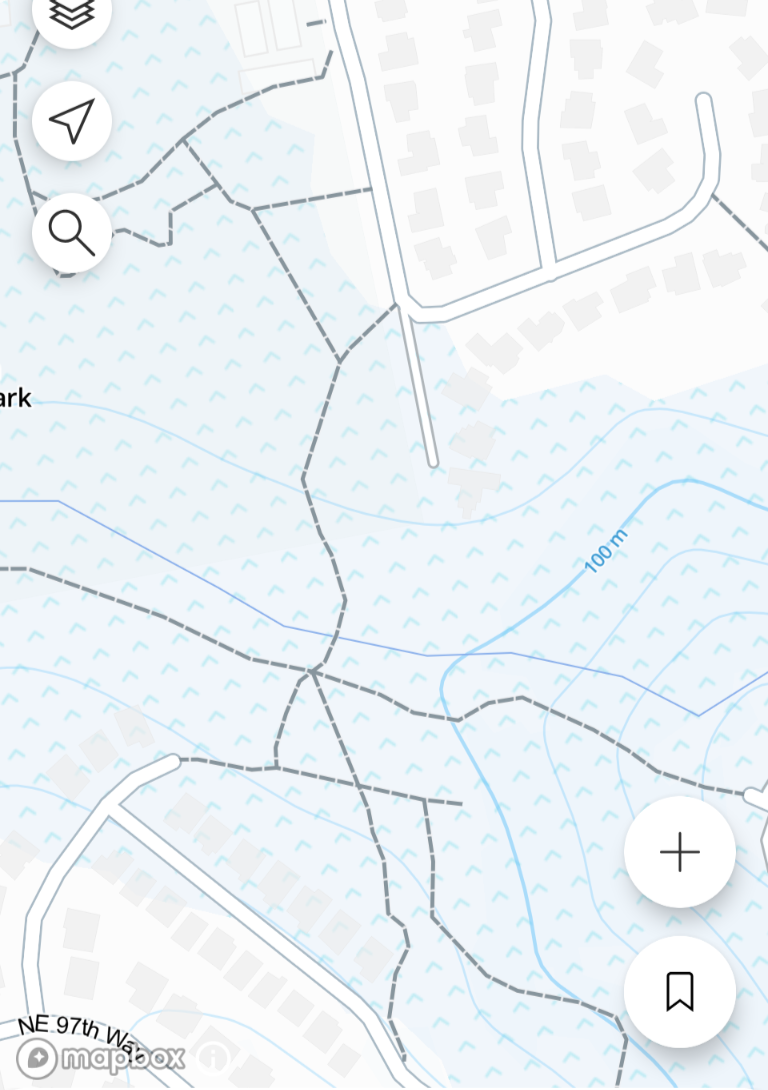
What that means is that Suunto can tell the difference between sidewalks and trails, can render them differently, and can hide them differently. Also, please note how crisp and contrast the map rendering is and how well trails are visible!
Now, the same exact area shown on the watch, also using the “winter” map style:
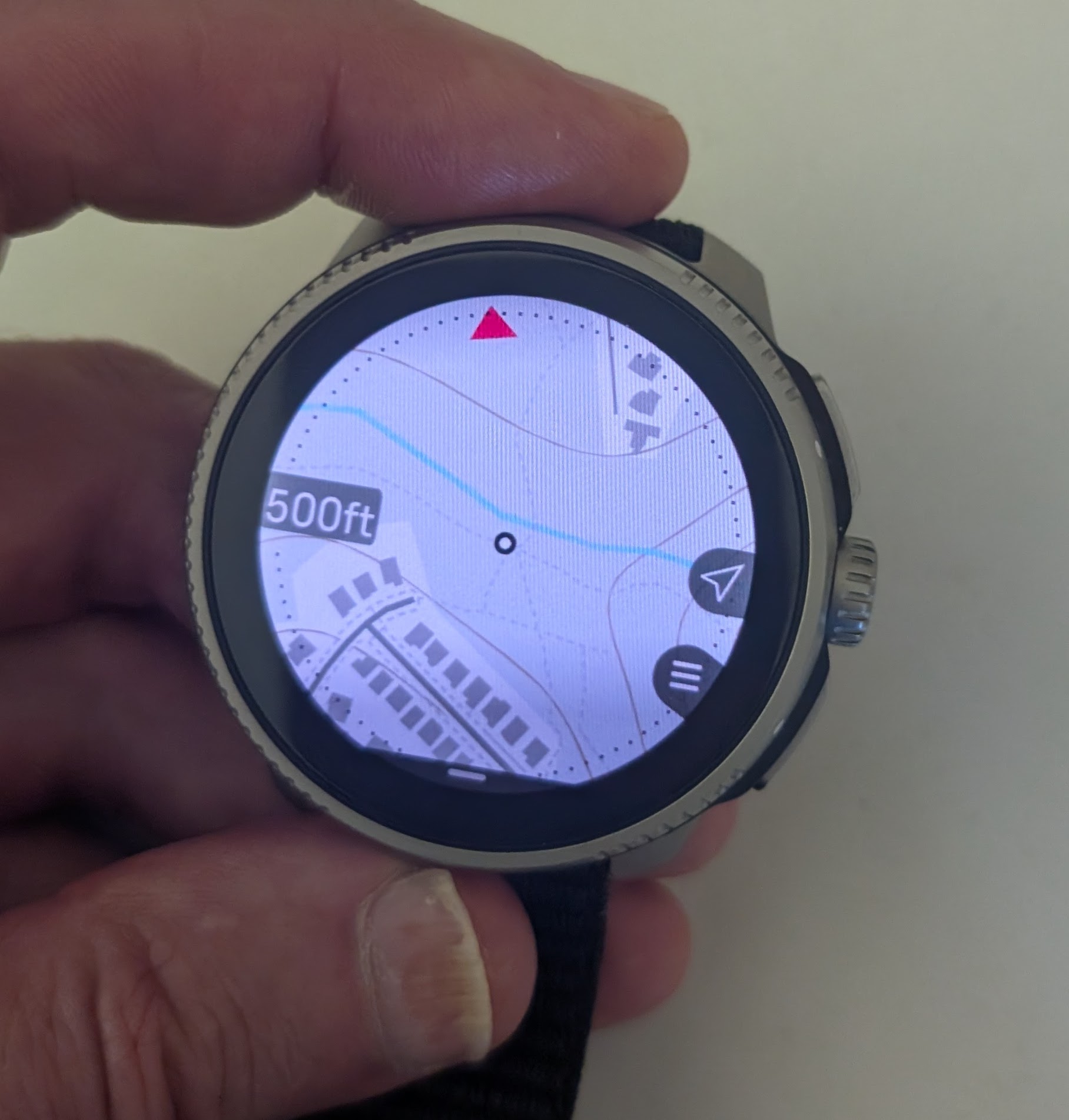
Before I took this screenshot and looked at it magnified on a laptop screen, I didn’t realize that trails are actually shown on the winter map. In fact, there are trails, but shown with such poor low contrast choice of colors, that it couldn’t possibly be worse. Can you see them? Also, strangely enough, buildings are very contrast and easy to see, even though they almost irrelevant, while trails are nearly impossible to see. Also, what we can see is that both trails and sidewalks are shown the same way.If the goal was to declutter the map in a city, it would be sufficient to hide only sidewalks while leaving trails visible just like it is done in Suunto App. It sounds like this should be possible to fix. If we have something that looks like the Suunto App screenshots above, I’d be super happy - that would be the best high contrast map style!
Also, I wonder if the new winter maps have been tested at all? I mean, trails are practically invisible on this map style at any zoom level. How comes that someone at Suunto has looked at this and decided that this is acceptable?
-
@sky-runner I’m not totally sure what the purpose of the “Winter” map theme is. Maybe trails are supposed to look like they’re under snow
 .
.I agree that it would be nice to have a better distinction between foot trails and sidewalks. The issue, however, is that OpenStreetMap data is behind all of this. And OSM is basically Wikipedia for maps, but with far less oversight. And there are many different ways to tag a simple path (path, footpath, sidewalk, cycle path, bridle path…) and then hundreds of different sub-tags for each of those designations (surface, access, direction of travel, structures, incline, smoothness, stroller access, and on and on and on…).
On top of all that, a whole lot of these paths are mis-tagged, especially outside of major population areas where there may only be one or two OSM contributors. Or the map data simply hasn’t been updated in years. And what’s more, different regions of the world tag similar paths differently! So what some might label a foot path, others will label a sidewalk.
Trying to boil all of this down into a clean, simple, easy to read map that works well on a watch screen has to be a terrifically hard job. I think Suunto has done pretty well to do this. (I wish the maps would be updated more frequently, but that’s a different topic.)
I 100% agree that trails should always be high contrast, either completely white or completely black, no gray. That’s why I use the “Dark” theme which has trails marked as white against a darker background.
-
@duffman19 said in Map Rendering and Trail Visibility after Software Update 2.43.8/.12:
I 100% agree that trails should always be high contrast, either completely white or completely black, no gray. That’s why I use the “Dark” theme which has trails marked as white against a darker background.
Do you have Vertical? On Suunto Race or Race S, none of the map themes display trails well with a high contrast combination of colors. I think that perhaps maps are limited to the 64-color palette of colors that is available on MIP displays, and on AMOLED Suunto doesn’t take advantage of a much higher number of colors, and mapping of MIP colors to AMOLED colors seems to be poor. For example, the background of the map on the on the light theme is often green (when running in a park or a forest), which is way too vivid.
-
Light theme: trails are usually dark green on bright green, which is a fairly low contrast. I stopped using this theme after the first few tries. Also at some zoom levels (e.g. 0.2 mile) I can still see individual building outlines but no longer can see trails - what these maps are optimized for? Overall this theme looks really nice, but unfortunately it is quite useless for trail running.
-
Dark theme: trails are usually green on dark green background, which is similarly low contrast or perhaps even worse contrast, than in the light theme.
-
High contrast theme: this is what I use most of the time, but even in this case trails are grey on black, which isn’t the best possible contrast. Also, trails are similarly thin to other map themes, which makes them difficult to see at the 500ft zoom level, especially if the screen has finger smudges or if there is a sun glare. Also, I should mention, that restricting trail visibility at higher zoom levels forces me to pan the map more with my fingers, which makes the screen dirty from smudges and makes the map visibility even worse. Normally, I never pan the map, but with this recent map changes I am forced to in order to see what’s ahead!
-
Winter theme: I don’t even understand why Suunto bothered to add this theme at all because in my opinion it is completely unusable. Trails are displayed as light grey on slightly lighter shade of grey. The contrast is so low I didn’t realize that trails are displayed at all until yesterday when took a picture of my watch and enlarged it on a laptop. Maybe it is supposed to show winter trails such as backcountry ski or snowshoe trails.
-
-
@sky-runner Sorry, yes, I have a Vertical and that’s what I am referencing. I didn’t realize that the themes were that different between the two watches.
-
@sky-runner That dotted circle is the best feature that I have ever seen on an outdoor watch. It makes it much easier to see the distance from actual position than the small scale at the bottom on other watches. Suunto: never ever think of removing that dotted circle. Thx:)
-
@szleslie Without this dotted circle, you also know what the distance is because it is the edge of the screen.
-
@maszop Mmmm yes. You are right after all. I do not mind that circle. On the contrary, I need it.
-
I know I am beating a dead horse, but wanted to share these pictures of map rendering on Race S at different zoom levels - this is using the Light map theme and imperial units. All pictures were taken at the same place. The reason I emphasize imperial units is that I think the situation with trail visibility is worse for users who use imperial units because of the choice of zoom levels for imperial units vs. metric units.
100 ft (=30m): This zoom level isn’t practically usable in my opinion - it is too zoomed in so it covers only 10-20 seconds of movement. The lowest level when using metric units is 50m, which is more practical.
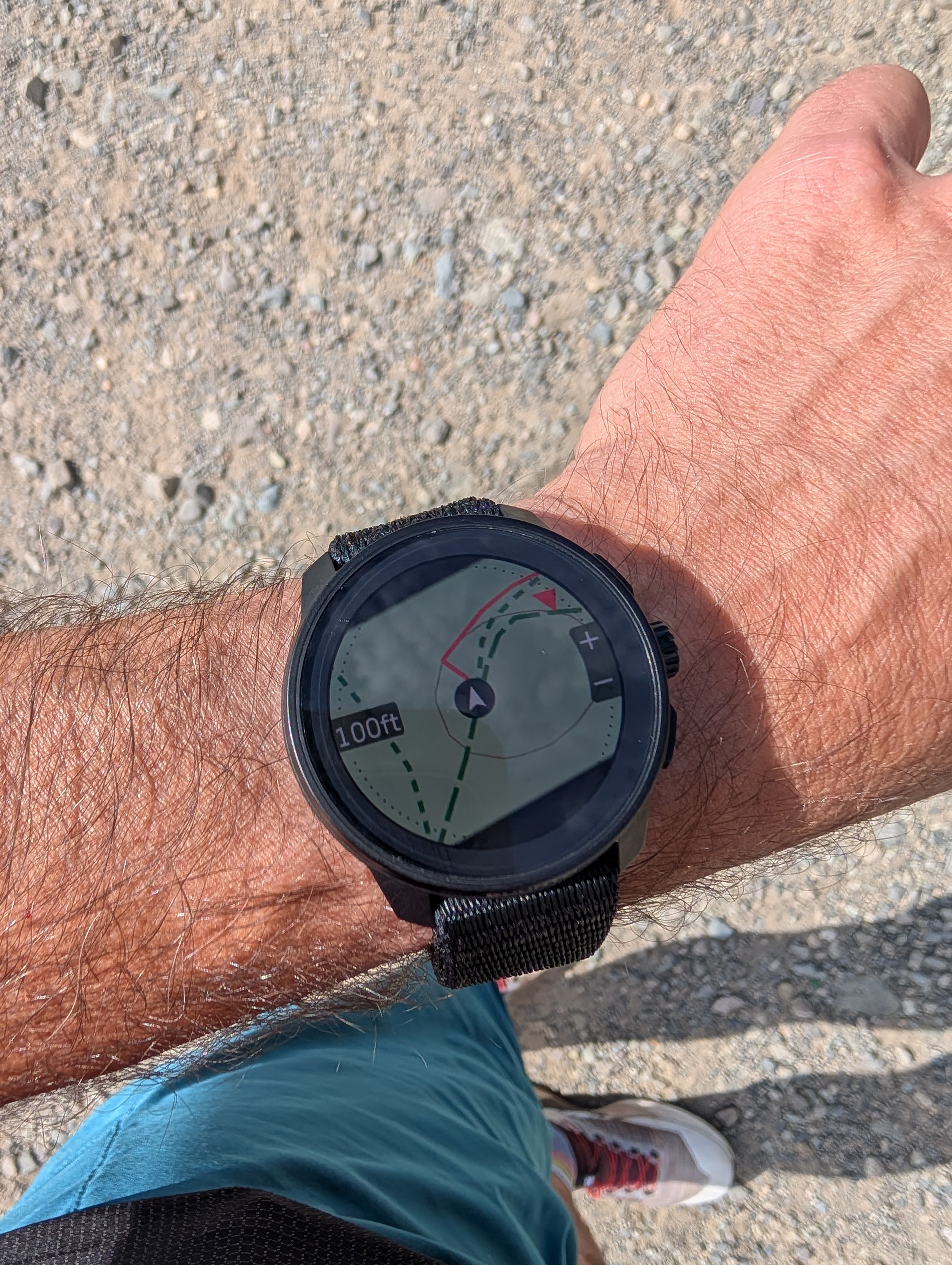
200 ft (=60m): This should be the lowest zoom level. Trail readability is good, but this is still too much zoomed in to be usable when trail running, except in rare cases. This is how I think trails should appear in all zoom levels.
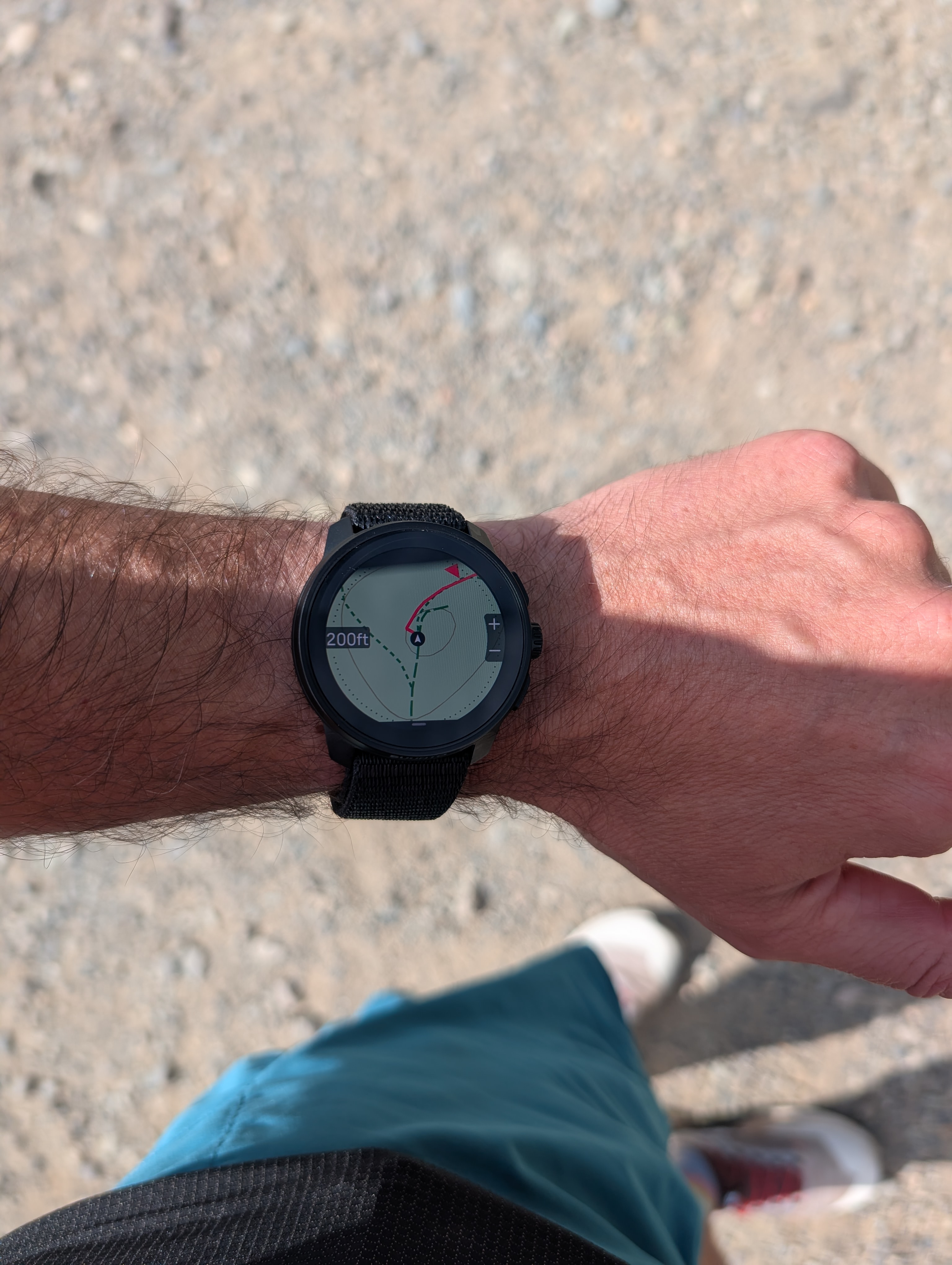
500 ft (=150m): This level (or 0.2mi) is what I’d use in most situations when I need to make frequent turns. What you can see here is that trails are quite thin and difficult to see, especially when in a forest (on the green background). The gravel service road has a bit better visibility.
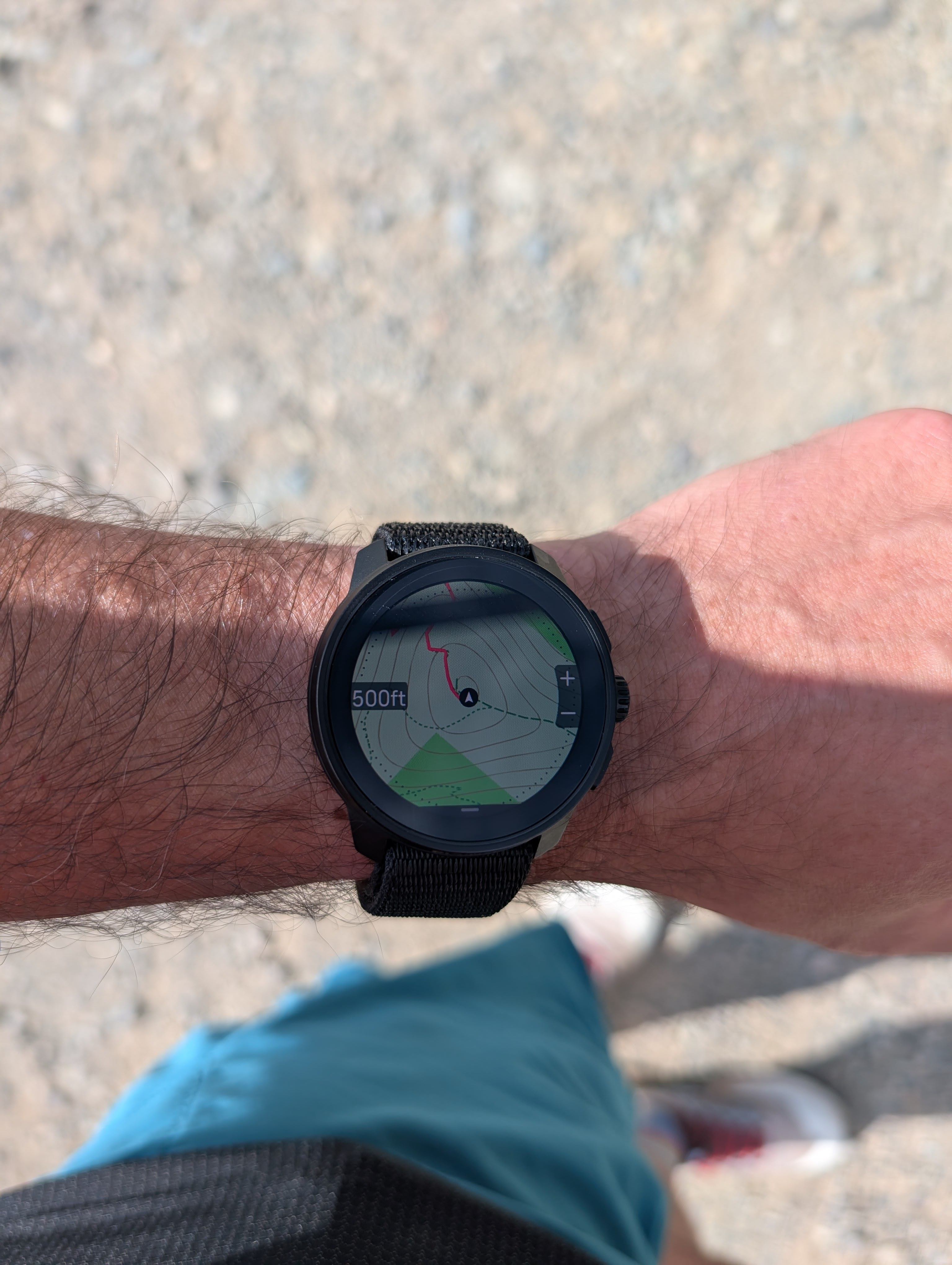
0.2 mi (=320m): This is perhaps what should be the most usable zoom level as it still covers roughly 2 minutes of running from the center to edge. However, trails are no longer rendered and even the service road is hard to see.
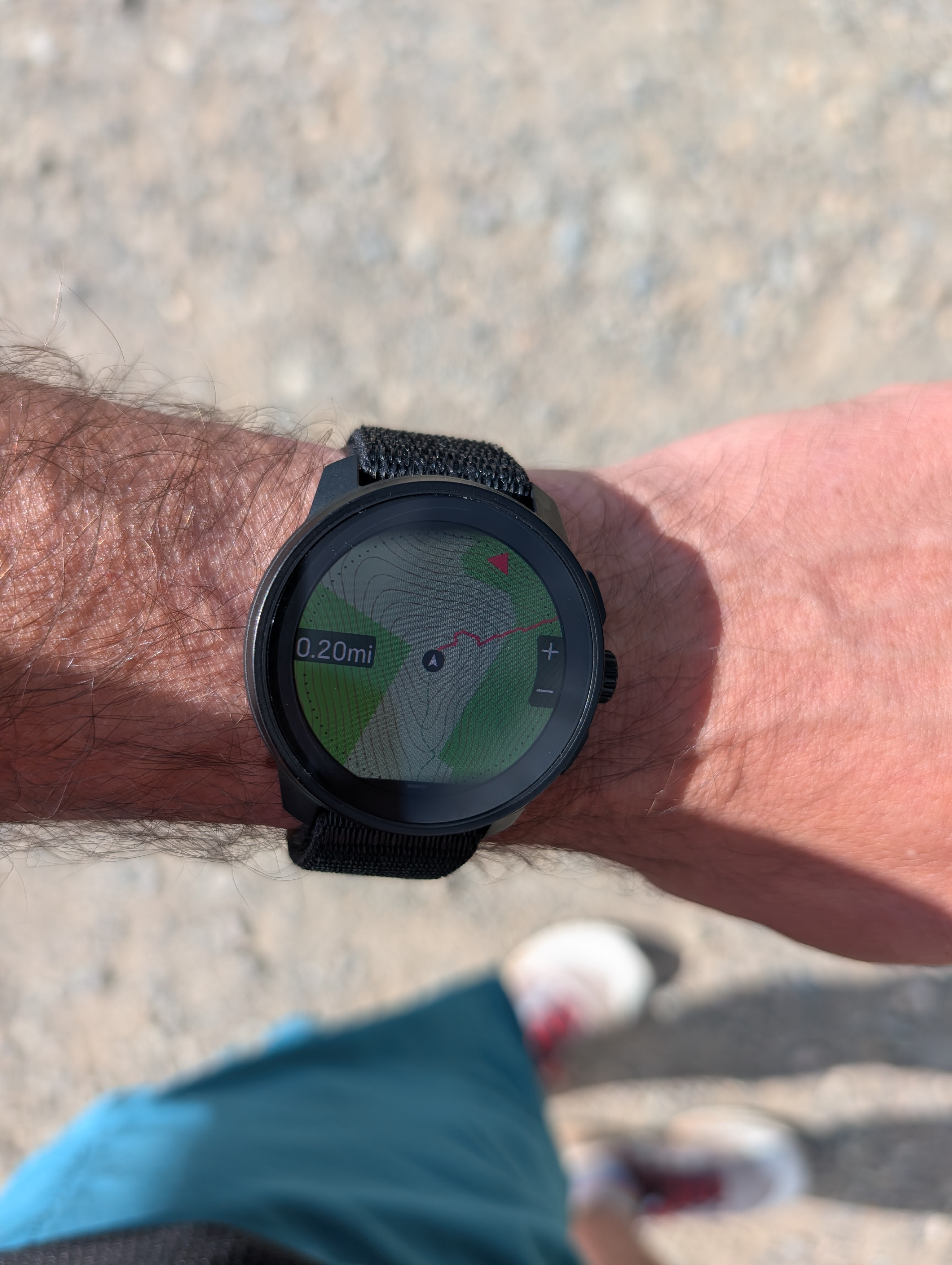
0.5 mi (=800m): The service road is still visible but only against a lighter background. I think trails should still be visible at this level if this watch is targeted at trails runners and hikers.
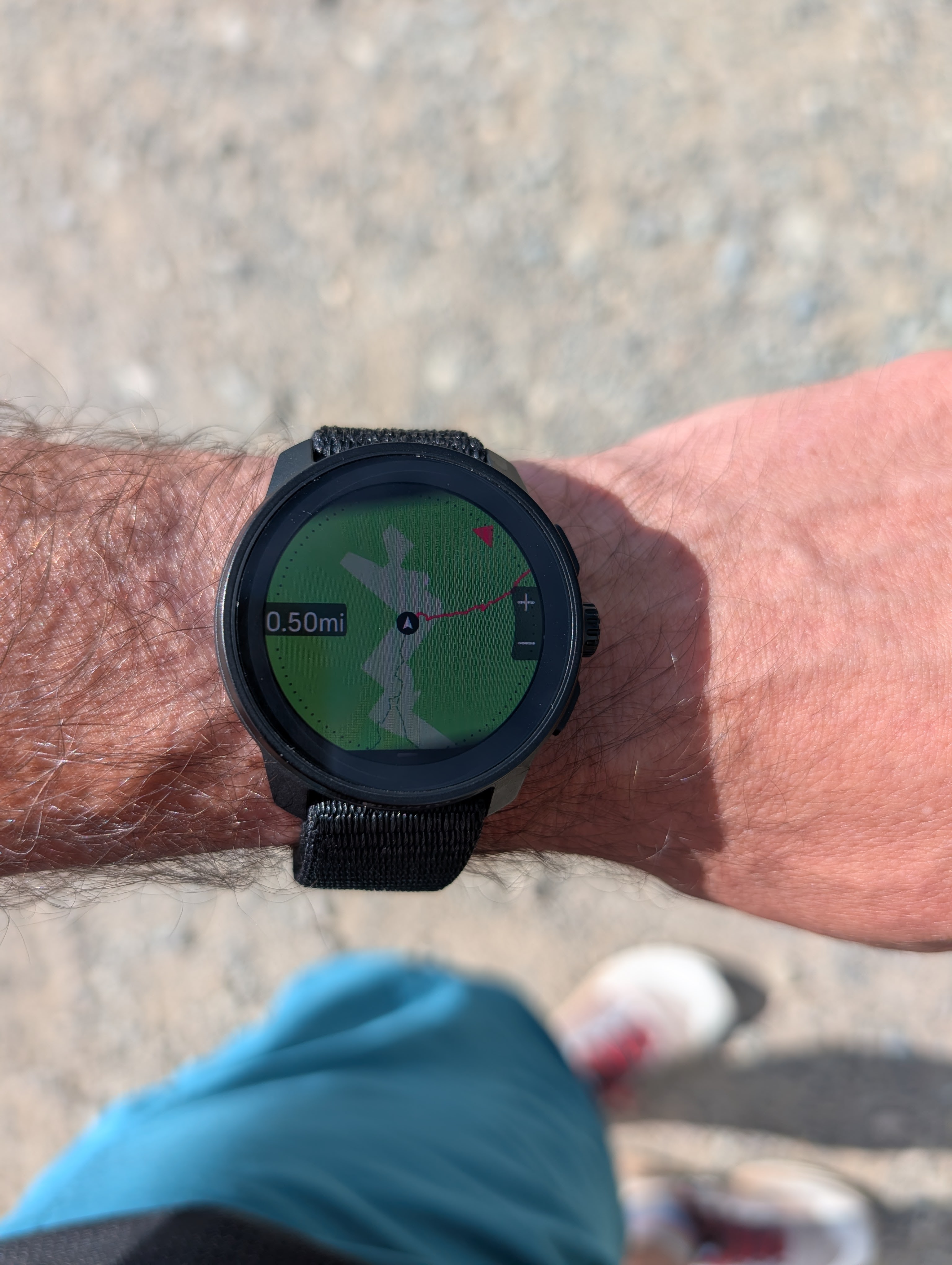
1 mi (=1.6km): What’s even the point? Also, the green background color for the forest area is way too saturated, which unnecessarily reduces the map contrast (when it does show trails). 90% of my trail running involves running in forested areas, so this is the kind of background that I see on Suunto Race or Race S most of the time.
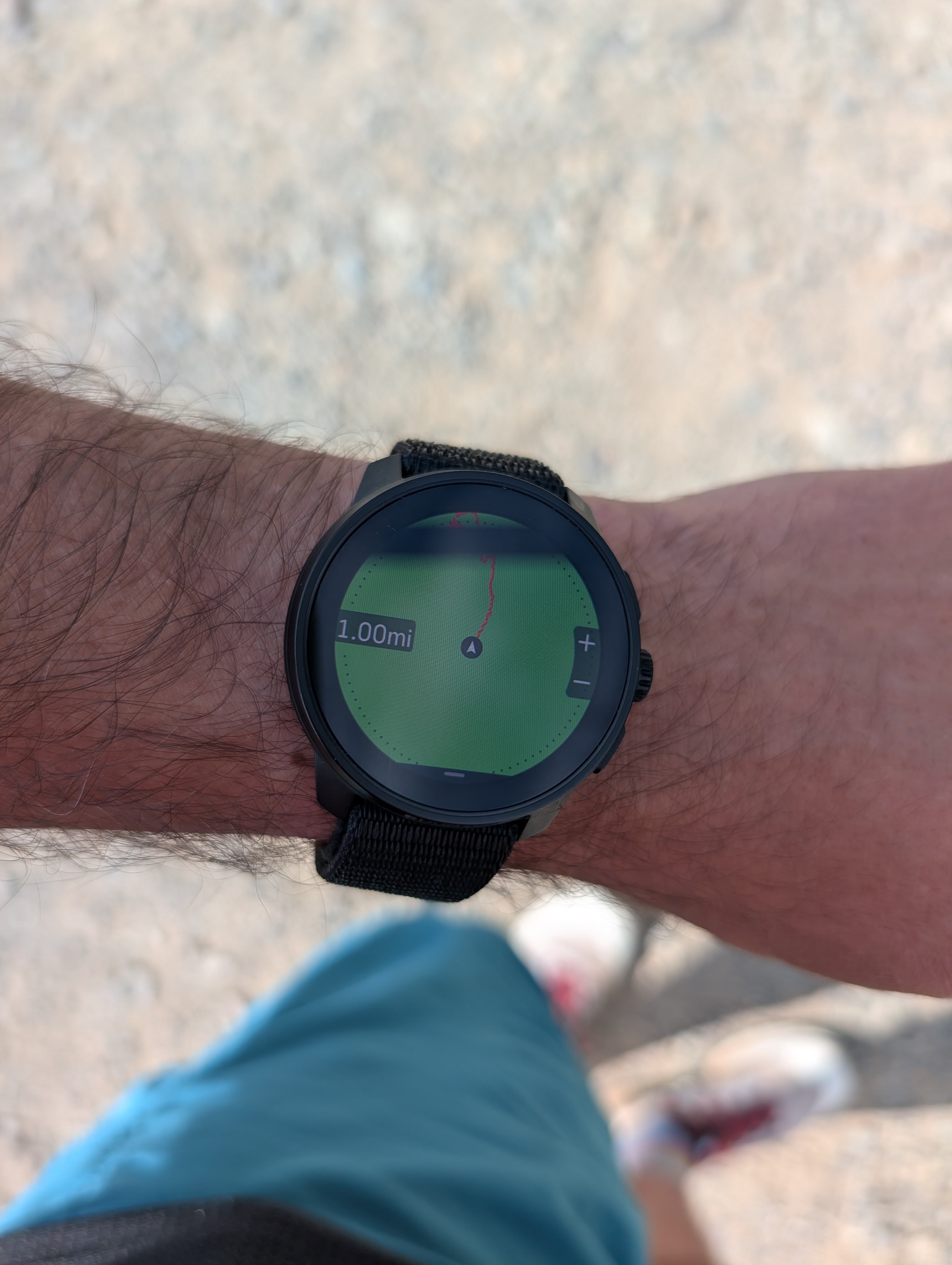
-
@sky-runner at least for Vertical you can choose 25, 50, 100, 200, 500 m and 1, 2, 5, 10 an 20 km. I find 25 m very handy e.g. while geacaching.
-
@Milan-Šádek said in Map Rendering and Trail Visibility after Software Update 2.43.8/.12:
@sky-runner at least for Vertical you can choose 25, 50, 100, 200, 500 m and 1, 2, 5, 10 an 20 km. I find 25 m very handy e.g. while geacaching.
The same for the Race and Race S, and 25m zoom is useful for me in case of consecutive forks and/or complex terrain topology. Actually, trails visibility is often challenging, unless you are following a route, since they are way thicker!
